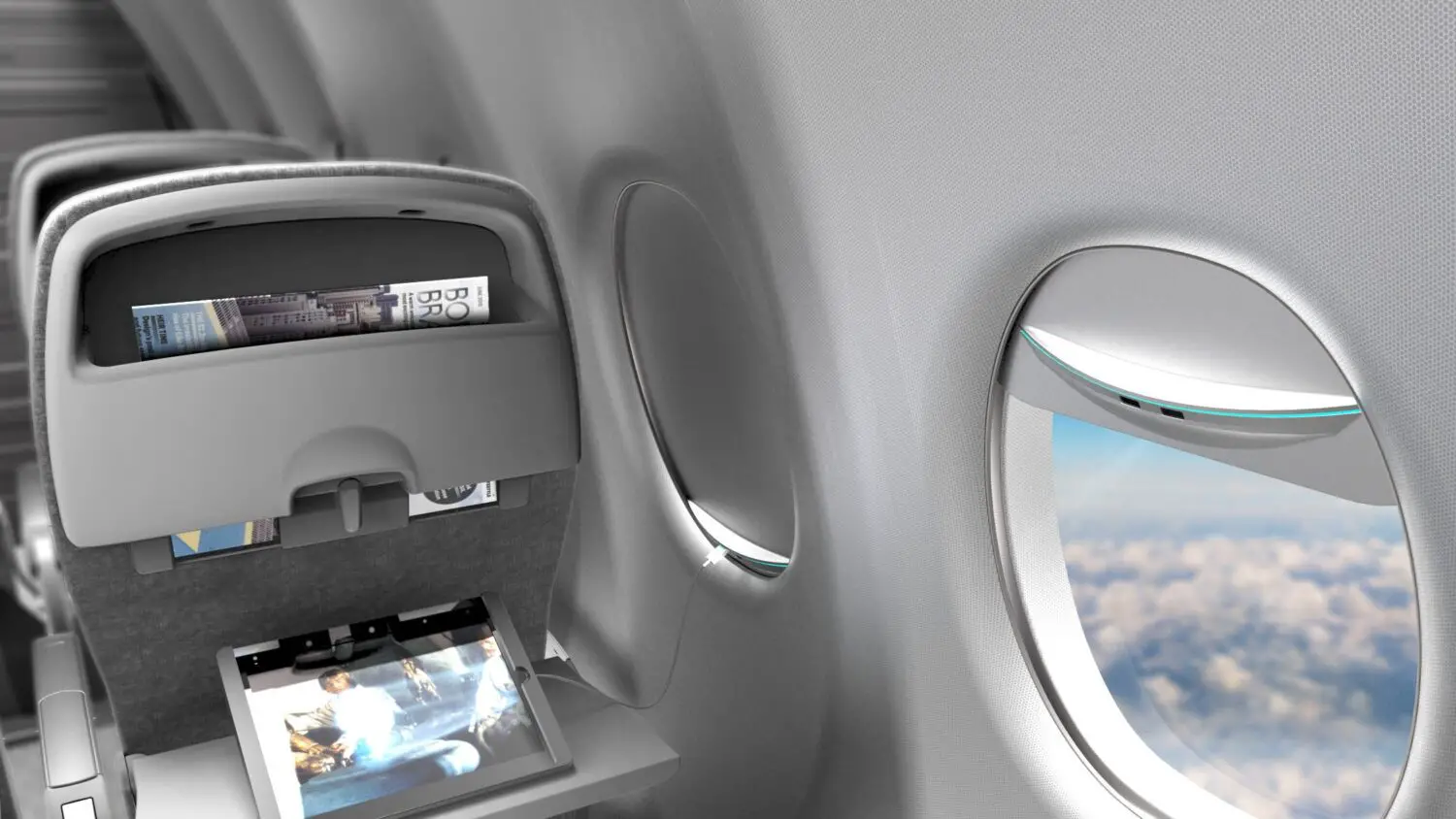Looking for a way to charge your devices on an airplane? Look no further! We’ve got you covered with some handy tips and tricks to keep your gadgets powered up while you’re soaring through the sky. Whether you’re a frequent flyer or just heading off on a vacation, being able to charge your devices on the plane is essential in today’s connected world.
So, let’s dive right in and discover how to charge devices on an airplane, ensuring you stay connected and entertained throughout your journey.
Table of Contents
How to Charge Devices on an Airplane: A Comprehensive Guide
Traveling by air has become an essential part of our lives, and we often rely on our electronic devices to stay connected, entertained, or productive during flights. However, keeping our devices powered up can be a challenge, especially on long-haul flights.
In this comprehensive guide, we will explore various methods and tips for charging your devices while on an airplane, ensuring uninterrupted usage throughout your journey.
1. Understanding Airline Policies
Before you embark on your flight, it is crucial to familiarize yourself with the specific policies and regulations regarding device charging on the airline you are flying with.
While most airlines allow personal electronic devices, such as smartphones and tablets, some may have restrictions on charging methods or specific outlets available on the aircraft. It’s always best to check the airline’s website or contact their customer service to ensure you comply with their guidelines.
A. In-Seat Power Outlets
An increasing number of airplanes now come equipped with in-seat power outlets, allowing passengers to charge their devices directly from their seats. These outlets are typically found in the seatback or armrest and can accommodate a variety of plug types. However, it’s essential to note that not all seats may have access to power outlets, particularly in economy class or on older aircraft.
If you require access to an in-seat power outlet, consider choosing a seat with this feature during the booking process or check seat maps on the airline’s website.
B. USB Ports
Another convenient option provided on some aircraft is the availability of USB ports. These ports are usually located near the in-flight entertainment system or in the seatback pocket. USB ports allow you to charge your devices using a USB cable without requiring an external power adapter.
USB ports are more commonly found on newer aircraft and are becoming increasingly prevalent across various airlines.
C. Portable Chargers and Power Banks
If your flight doesn’t offer in-seat power outlets or USB ports, investing in a portable charger or power bank can be a game-changer. These compact and rechargeable devices store power that can be used to charge your devices on the go.
It’s crucial to select a power bank with enough capacity to meet your charging needs. Consider factors like battery capacity, number of ports, and compatibility with your devices before purchasing a power bank.
2. Preparing Your Devices for the Flight
Ensuring your devices are fully charged before boarding the airplane is a smart strategy, especially if you anticipate using them extensively during the flight.
Follow these tips to maximize your device’s battery life and be prepared for any charging scenario:
A. Battery Optimization
Before your flight, optimize your device’s battery by closing unnecessary apps and reducing screen brightness.
Turn on battery-saving modes or low-power modes available on most smartphones and tablets. Disabling unnecessary notifications and switching to airplane mode can also help conserve battery life during the flight.
B. Carry Charging Cables and Adapters
Pack your charging cables and adapters in your carry-on bag to ensure you have them readily available during the flight. It’s wise to carry a variety of cables, including USB-A, USB-C, and Lightning cables, to accommodate different devices and charging options.
C. Backup Batteries
Consider carrying spare batteries for devices that allow battery swapping, such as cameras or portable game consoles. Having extra batteries can be a lifesaver, especially on long flights where in-flight power options may be limited.
D. Device-Specific Tips
Different devices have unique power-saving features and charging requirements. Here are a few device-specific tips:
- iPhones: Enable Low Power Mode by going to Settings > Battery > Low Power Mode. This feature conserves battery life by disabling non-essential functions.
- Android Phones: Activate Battery Saver mode by going to Settings > Battery > Battery Saver. This mode restricts background activities and optimizes power consumption.
- iPads and Tablets: Reduce screen brightness and disable unnecessary background app refresh to extend battery life.
- Laptops: Optimize laptop power settings, close unnecessary applications, and disable power-hungry features like Wi-Fi and Bluetooth when not in use.
3. Alternative Charging Methods
While in-flight power options have improved over the years, it’s still essential to be prepared for situations where these options may not be available. Here are some alternative charging methods you can explore:
A. Seatback Entertainment Systems
If your flight offers seatback entertainment systems, you may be able to find a USB port or power outlet on or near the screen. Check the seatback for any charging options. However, it’s important to note that not all seatback entertainment systems provide charging capabilities, especially on older aircraft.
B. Airline Lounges and Business/First Class Cabins
If you have access to an airline lounge or are seated in the business or first-class cabin, you are more likely to have access to power outlets or USB ports. Take advantage of these amenities by charging your devices before or during the flight.
C. Ask the Cabin Crew
In situations where you are unable to find a charging option, don’t hesitate to ask the cabin crew for assistance. They may be able to provide you with alternative solutions or direct you to available charging stations on the aircraft.
D. Charging Stations at Airports
To ensure your devices are fully charged before your flight, take advantage of charging stations available at airports. These stations are usually located near departure gates, lounges, or waiting areas. Pack your charging cables and adapters in your carry-on bag, so you can easily connect your devices to these stations during layovers or before boarding.
4. Travel-Friendly Charging Accessories
Investing in travel-friendly charging accessories can make charging your devices on an airplane more convenient and efficient. Consider the following accessories:
A. Multi-Port USB Chargers
A multi-port USB charger allows you to charge multiple devices simultaneously, eliminating the need for multiple power outlets or USB ports. Look for compact and lightweight options that won’t take up much space in your carry-on bag.
B. Travel Power Adapters
If you frequently travel internationally, a travel power adapter is a must-have accessory. These adapters allow you to plug your charger into various power outlet types found in different countries.
Look for adapters that offer compatibility with multiple plug types and have built-in surge protection.
C. Charging Cases and Sleeves
For smartphones or tablets, consider investing in charging cases or sleeves. These protective cases or sleeves come with built-in batteries and can provide an additional power boost when needed.
They are especially useful when in-flight power options are limited.
5. Safety Considerations
While charging your devices on an airplane, it’s essential to prioritize safety. Follow these safety tips:
A. Use Certified Charging Cables and Adapters
Ensure your charging cables and adapters are certified and comply with safety standards. Non-certified or poorly made charging accessories can pose safety hazards and damage your devices.
B. Avoid Overheating
Always monitor your devices during charging and avoid covering them or placing them in confined spaces that may cause overheating. Overheating can affect battery life and pose safety risks.
C. Adhere to Airline Policies
Respect and adhere to the specific policies and regulations of the airline regarding device charging. Non-compliance may result in consequences and hinder the overall safety of the flight.
D. Do Not Leave Devices Unattended
Never leave your devices unattended while charging, especially in public areas or shared spaces. Keep an eye on your devices to ensure their safety and prevent any potential theft or damage.
Charging your devices on an airplane doesn’t have to be a challenge. By understanding airline policies, preparing your devices, exploring alternative charging methods, and investing in travel-friendly accessories, you can ensure a seamless and uninterrupted charging experience during your flight.
Prioritize safety, follow guidelines, and make the necessary arrangements to keep your devices powered up and ready to go. Bon voyage!
Phone charging in flight | Travel Phone Charger
Frequently Asked Questions
Frequently Asked Questions (FAQs)
Yes, most planes nowadays have USB ports available for you to charge your devices. However, it’s important to note that the charging speed might be slower compared to using a wall charger.
If the plane doesn’t have USB ports, you can bring your own portable charger or power bank. Make sure it’s fully charged before your flight.
Some airplanes have power outlets available, especially in premium cabins or specific seating areas. You can use these outlets to charge your devices by bringing the appropriate adapter or charger.
It’s recommended to bring universal adapters that support different types of power outlets, as the outlets on airplanes may vary depending on the airline and aircraft. Additionally, make sure your charger is compatible with the voltage provided by the outlet.
Yes, most airlines require you to turn off and unplug all electronic devices during takeoff and landing. This includes charging your devices. Once the aircraft reaches cruising altitude, you will be allowed to use and charge your devices again.
Yes, you can bring your laptop charger on the airplane. However, it’s important to note that some larger laptops consume more power, and the available power outlets on the airplane might not be able to provide sufficient charging power for these devices.
Most airlines allow portable chargers on the airplane. However, there are restrictions on the capacity of lithium-ion batteries due to safety concerns. It’s recommended to check with your airline beforehand to ensure compliance with their regulations.
In some cases, the USB ports on the seatback entertainment system may only support data transfer and not provide charging capabilities. It’s recommended to check with the flight attendants or refer to the airline’s guidelines to determine if the USB ports on the entertainment system can be used for device charging.
Final Thoughts
In conclusion, knowing how to charge devices on an airplane is essential for staying connected and entertained during your flight. Remember to check the airline’s policies beforehand to ensure compliance with their rules and regulations. Carry a portable charger or power bank to keep your devices powered up, and consider investing in a multi-port USB adapter to charge multiple devices simultaneously. Utilize the available USB ports or in-flight power outlets, if provided, and be mindful of conserving battery life whenever possible.
By following these tips, you can ensure that your devices remain charged and ready for use throughout your flight.






